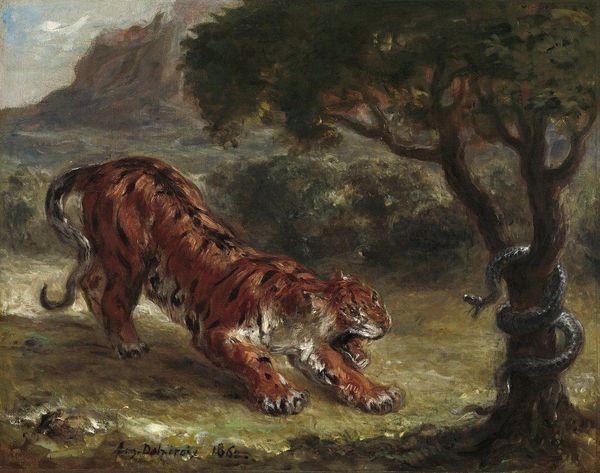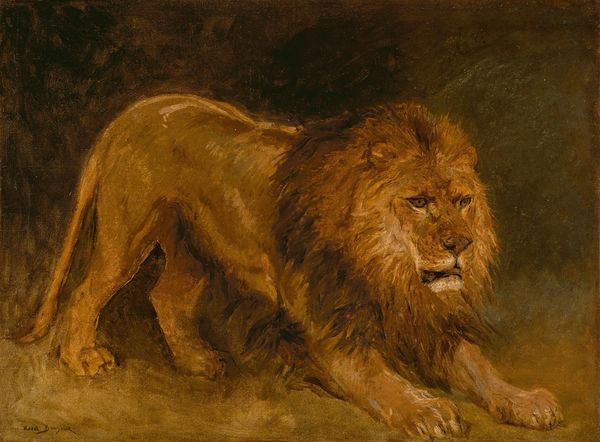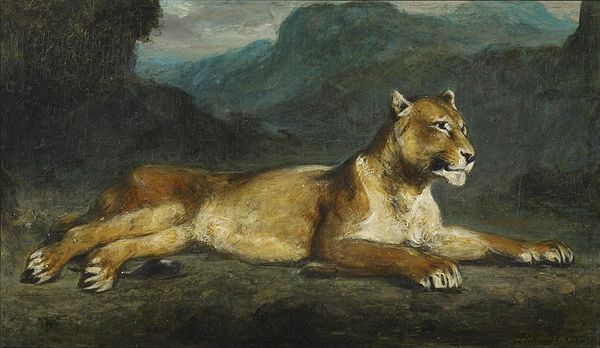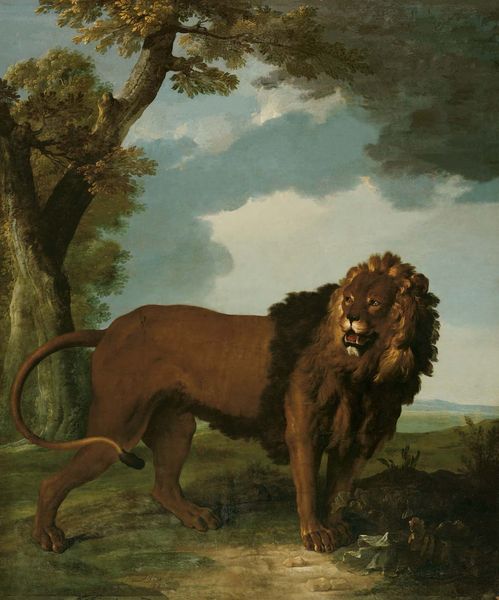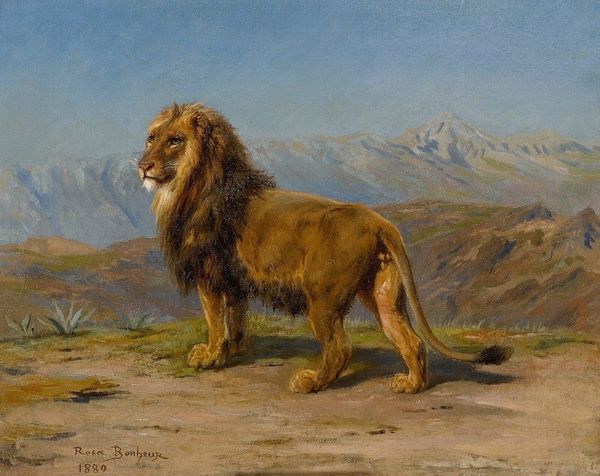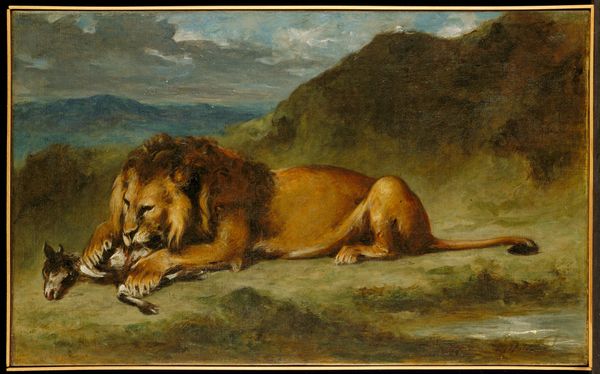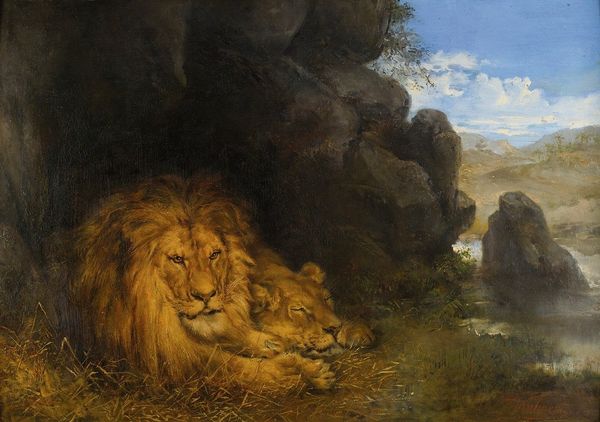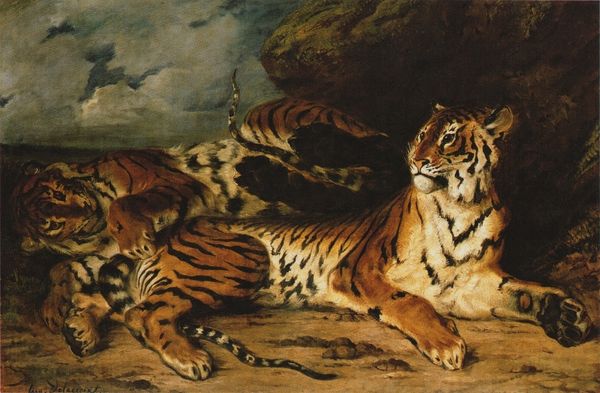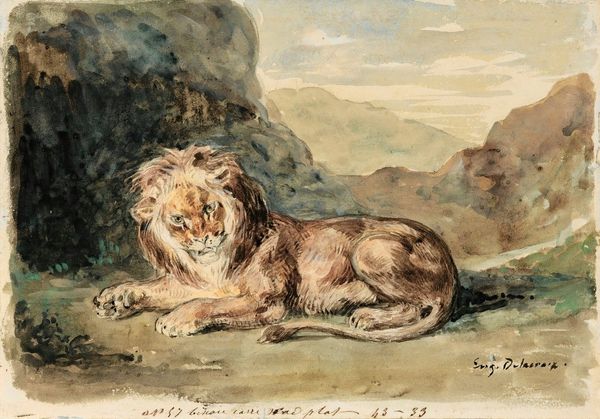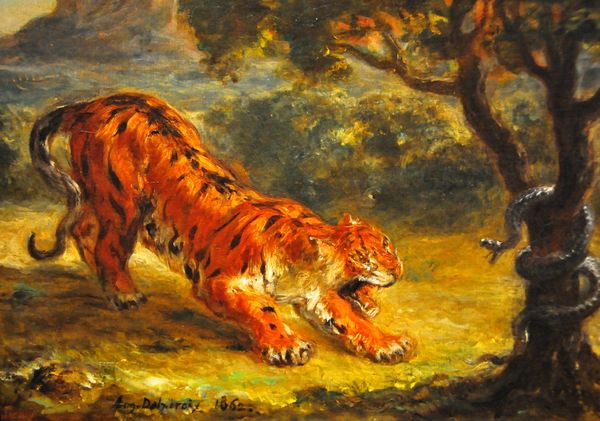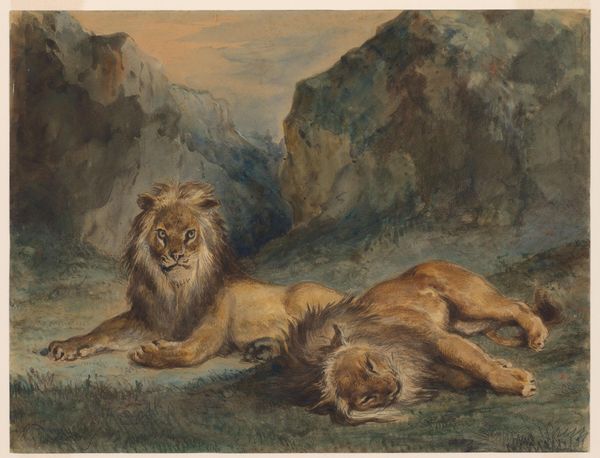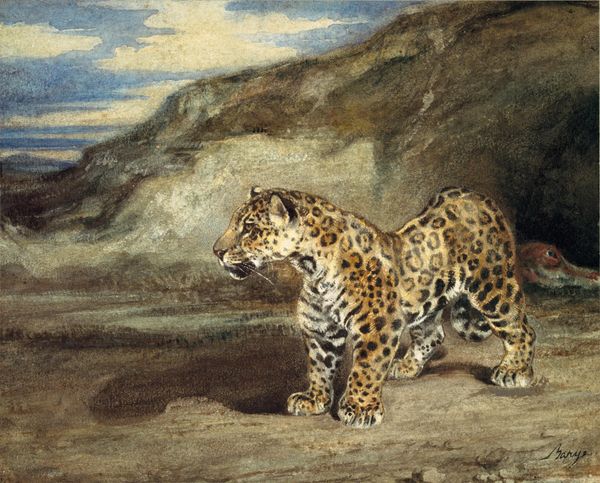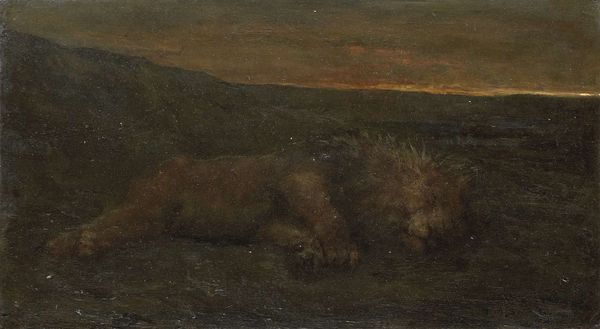
painting, oil-paint
#
animal
#
painting
#
oil-paint
#
landscape
#
figuration
#
oil painting
#
romanticism
Copyright: Public Domain: Artvee
Curator: Take a moment to observe "Tiger on the Look-Out," a painting rendered in oil paint. While undated, this work evokes the dynamism of Delacroix, that rebellious Romantic. I see the intensity in those brushstrokes and feel this raw, primal energy, a tiger painted not just seen. Editor: It’s captivating, how the tiger melts into the landscape, everything seemingly formed from the same swirling mud and furious brushstrokes. Did Delacroix work *en plein air* with the mosquitos buzzing? It’s about laboring. What did those tubes of pigment represent, who mixed the colors? Curator: An interesting observation about materiality, for sure. Beyond pigments, I like the work’s palpable anxiety and barely restrained violence. The Romantic Movement was all about challenging societal norms. Do you see the defiance of reason and restraint in that ferocious glare and restless posture? Editor: Defiance of restraint... sure, maybe we are all prisoners to the capitalist system but speaking of *restraint*, just look how much product goes into this. You have ground minerals, processed oils, manufactured linen, labor for its construction... that support turns out to be an interesting commodity! Curator: You make a great point about commodification, always reducing things to raw numbers and utility. Though I must push back slightly—couldn't the lack of a specific date here represent Delacroix's intention for this raw scene to be viewed through an eternal or mythical scope? I see that this could represent every tiger, ever. Editor: Eternal in value... yes, exactly! Consider, where did the materials for these 'romantic' landscape paintings originate, how were they distributed and traded, who profited from it? Curator: I suppose that in every artist there exists not only the creator but also the participant of a historical process that commodifies, but at least in its own small way also frees human creativity, right? Editor: Yes! Maybe, a tiny rebellion etched in manufactured pigments that keeps our own eyes wandering centuries after... Curator: In the end, it keeps me thinking about how artists use material to render their unique imprint of something like nature and violence into timeless icons that also function as commodities within this ever-churning spectacle we call the art market!
Comments
No comments
Be the first to comment and join the conversation on the ultimate creative platform.
